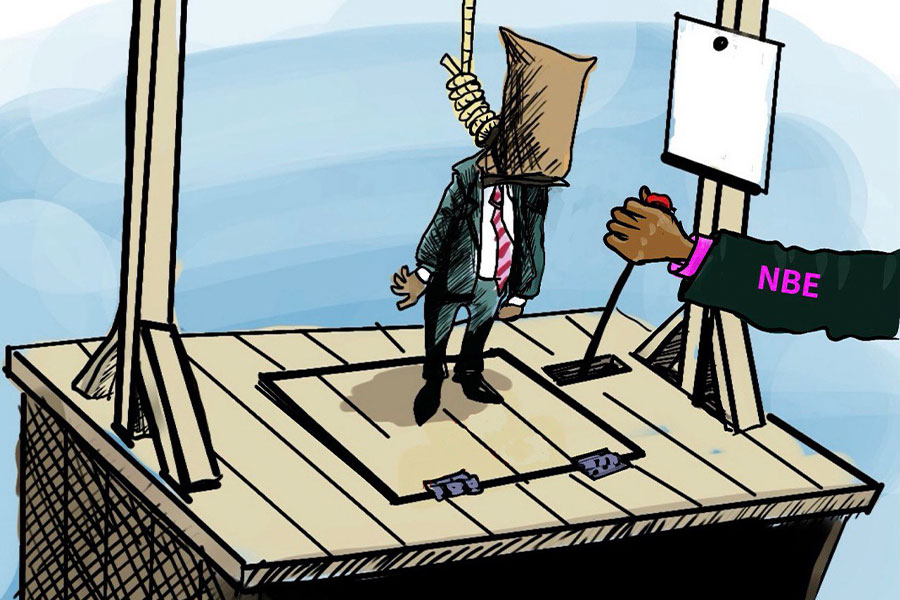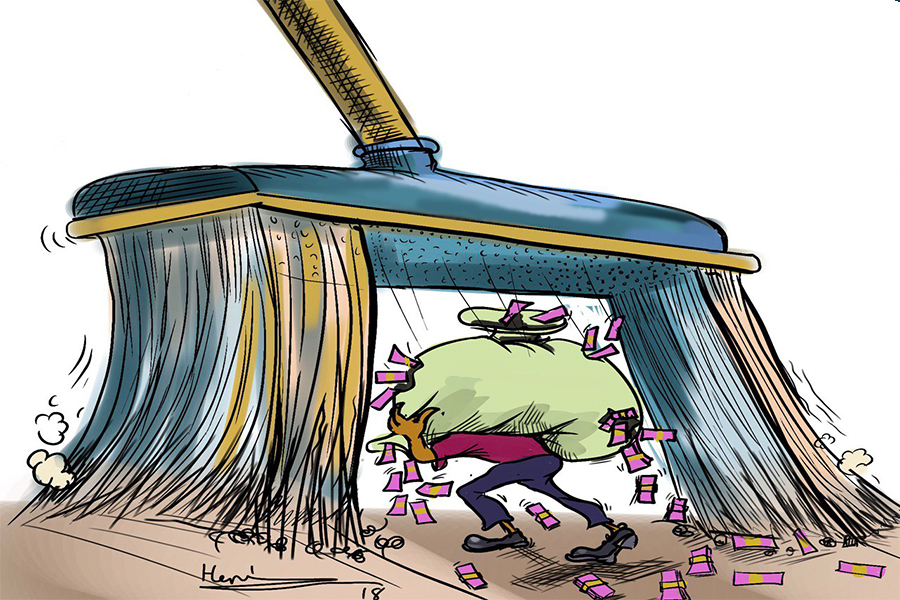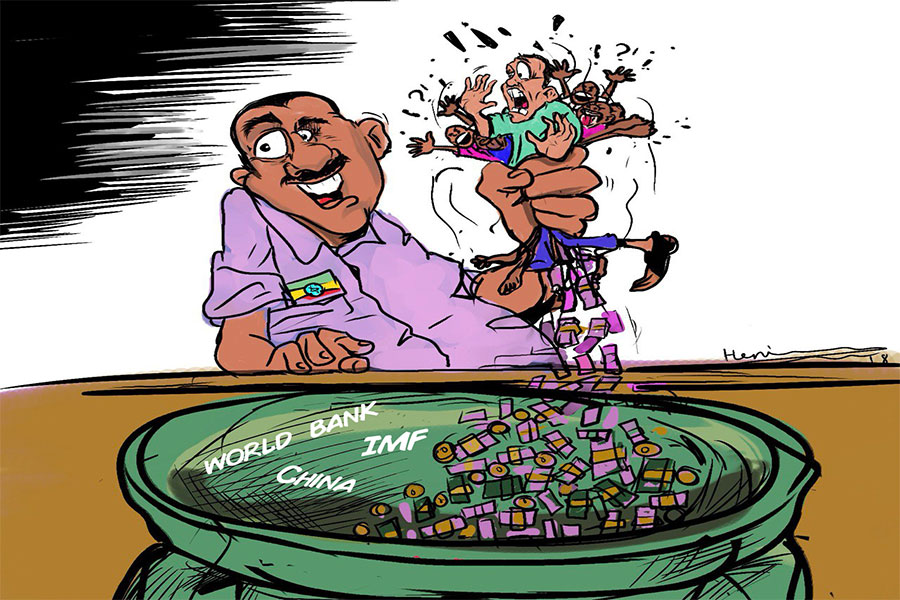
Photo Gallery | 180394 Views | May 06,2019
Jun 29 , 2025.
The foreign exchange market moved little in the six trading days last week, but the calm surface concealed a handful of ripples. Across the banking industry, the average buying rate for the Dollar settled at 132.91 Br, while the average selling rate edged to 135.52 Br. Most banks stood pat, their quotes barely changing.
Yet, several — some state-backed, others privately run — quietly shifted course, signalling different balance-sheet pressures and policy goals.
The market was divided loosely into two camps.
The first is a cluster of private banks — Awash, Wegagen, Dashen, and Abyssinia — that rarely stray far from the mean. Awash and Wegagen banks held steady for most of the week, then allowed a gentle appreciation after June 26, a routine housekeeping move rather than a directional bet.
Dashen Bank began the week the same way but jolted the pack on Saturday, lifting its buying rate from roughly 131.8746 Br a week before to 133.62 Br, a leap of more than 1.7 Br. The change, the sharpest by any commercial bank, revealed either sudden liquidity needs or an opportunistic play ahead of the National Bank of Ethiopia’s (NBE) next forex auction.
Abyssinia Bank, by contrast, acted like a fixed-income security. Its buying rate held at precisely 132.98 Br all week, the clearest sign that management saw no advantage in tinkering.
The second camp was a mixed bag. The giant state-owned Commercial Bank of Ethiopia (CBE), the de facto policy-setting central bank, and the ambitious Oromia Bank behaved anything but synchronised. CBE posted the lowest rates on both sides of the market for six straight days. It bought dollars at 131.5 Br and sold at 134.13 Br, refusing to budge even as peers inched higher. The position signals a tacit coordination with regulators intent on damping demand.
Oromia Bank went the other way, dangling the market’s most generous offers in what looked like a bid to lure remittances. By Saturday, its buying rate reached 135.82 Br and its selling rate 138.53 Br, comfortably above the industry averages.
Between those bookends lay the National Bank of Ethiopia (NBE), whose movements were modest but meaningful. The Central Bank’s spread was a rare flat “0.00 percent” on June 23 and 24, widened the next day to 0.04pc, and crept to 0.29pc by week’s end. Small as they are, the changes hinted at policy testing, perhaps a trial run before broader regulatory relaxation.
The underlying numbers tell the same story. The NBE’s buying rate rose from 134.96 Br to 135.29 Br, paced enough to stay above the commercial average yet below Oromia Bank’s top-end quotes.
Statistically, the week produced the narrowest band of variation seen this quarter; however, several banks still printed values that were more than two standard deviations from the daily mean. Analysts flagged those prints as signals of either internal liquidity swings or policy-driven tweaks.
The highest buying-rate volatility came from the NBE itself, Bank of Abyssinia, and Dashen Bank, with Oromia and Amhara banks not far behind. CBE, Cooperative Bank of Oromia (Coop Bank), and Siinqee Bank camped at the opposite extreme; their rates were nearly frozen, a stringency that pointed to benchmark-tethered pricing or a shortage of spare dollars.
All banks respected the two-percent cap on spreads, a regulatory guardrail meant to limit speculative quoting. However, within that buffer, the tone differed sharply. Several private banks, but Wegagen, traded below the industry average, revealing that they are courting retail customers while scanning the horizon for incremental gains. Other banks, such as the CBE, mirrored policy priorities.
CBE’s rock-bottom rates displayed a defensive crouch. Oromia Bank’s highest quotes for several weeks now implied a hunt for fresh inflows. The NBE straddled both roles, setting an example while gathering data on how the market absorbs even tiny policy shifts.
By Saturday, the industry average buying rate had nudged higher, shaped mainly by Oromia Bank’s aggressive posturing and the Central Bank’s small upward steps. Yet, the selling average barely moved, a fact that speaks to banks’ reluctance to widen spreads beyond the allowed two percent.
Volatility metrics back up the visual calm. Daily price ranges were the tightest since early April, and cross-bank dispersion remained low, except for the noted outliers. Even Dashen’s late-week jolt added only a fractional bump to the systemwide standard deviation. Still, that single move served as a reminder that balance-sheet pressures can force action at any moment.
Last week’s snapshot tells a tale of caution and calculated deviation. Most banks, especially Awash, Abyssinia, Wegagen, and Nib, chose to watch and wait. A few, such as Oromia Bank, Dashen Bank, and the NBE, tested the boundaries. And one, the CBE, dug in behind rates that sit well below the market.
The currency market remains under strong regulatory guidance, even as the government negotiates reforms with the International Monetary Fund (IMF). The current tranquillity could be a coiled spring where, once external aid, debt-relief talks, or broader reforms clear the way, banks that have stayed near static may scramble to reprice.
Until then, the twin pillars of tight dollar supply and regulatory spread ceilings keep competition muted.
PUBLISHED ON
Jun 29,2025 [ VOL
26 , NO
1313]

Photo Gallery | 180394 Views | May 06,2019

Photo Gallery | 170596 Views | Apr 26,2019

Photo Gallery | 161638 Views | Oct 06,2021

My Opinion | 137278 Views | Aug 14,2021

Nov 1 , 2025
The National Bank of Ethiopia (NBE) issued a statement two weeks ago that appeared to...

Oct 25 , 2025
The regulatory machinery is on overdrive. In only two years, no fewer than 35 new pro...

Oct 18 , 2025
The political establishment, notably the ruling party and its top brass, has become p...

Oct 11 , 2025
Ladislas Farago, a roving Associated Press (AP) correspondent, arrived in Ethiopia in...